kurt seligmann
︎Artist, Painting, Surreal
︎ Ventral Is Golden
kurt seligmann
︎Artist, Painting, Surreal
︎ Ventral Is Golden
︎ Ventral Is Golden
“My paintings are standard figures of mythology. I have interpreted them in my own way, endowing them with animal and vegetable life and with that mysterious stereo-metrical growth of the mineral world. Lunar plants open their pods, emerald roses sow their seeds, and Rubezahl, the mountain spirit, wraps himself in stone.”
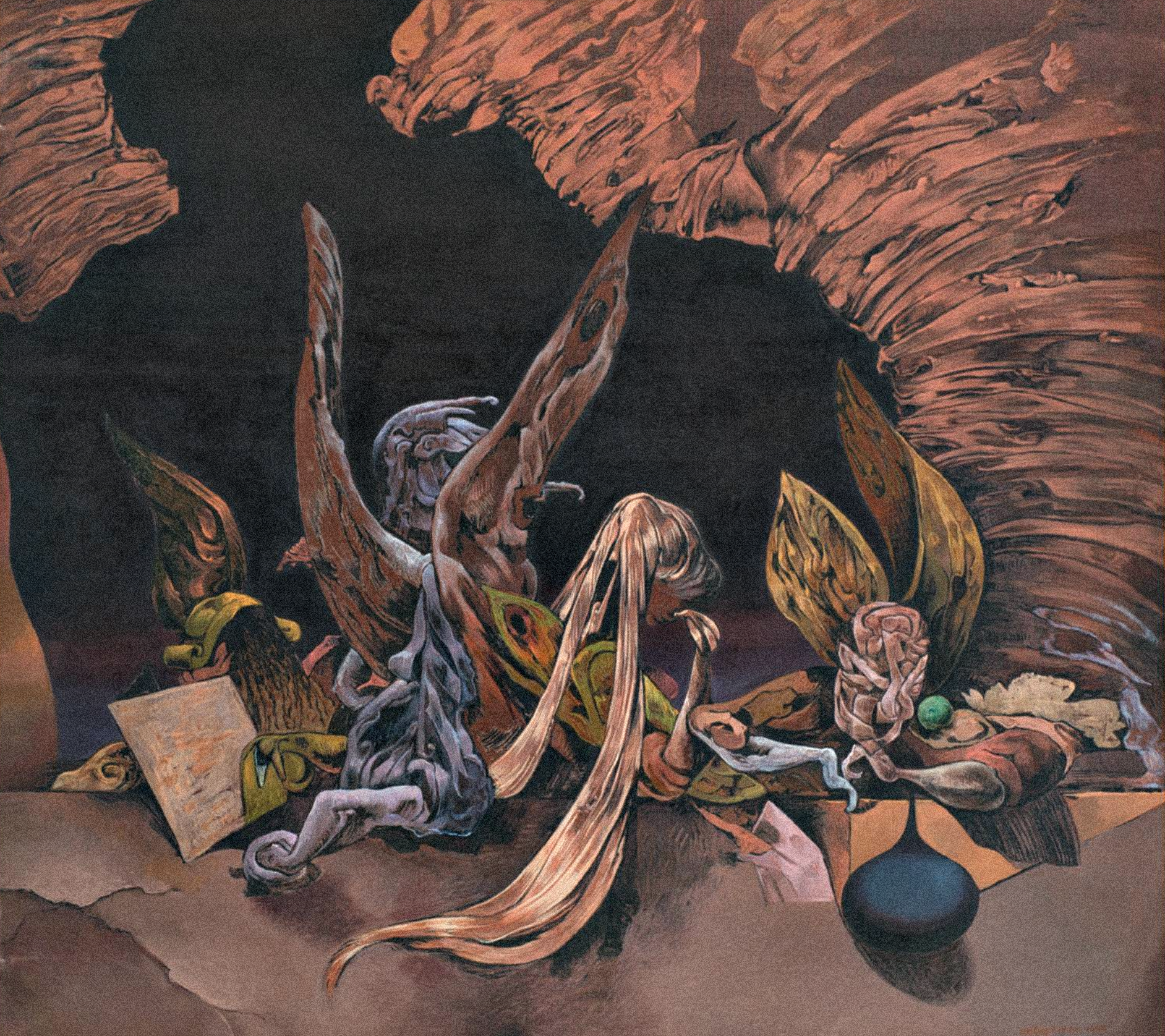
“When Kurt Seligmann arrived in Paris in 1929, he entered a milieu effervescent with new ideas and a quest for meaning through art itself. New movements in art transformed the occult revival of the late 19th century, aligning it with new researches in art, mind and science. The residue of late 19th century ideas connected symbolism, premonition, dreams, and the occult, to the psychoanalytic work of Freud, Wilhelm Reich, and Carl Jung...
Seligmann joined the Abstraction-Creation group founded by Hans Arp and Jean Hélion in Paris in 1931, driving his impulse towards the potential meanings of abstract art. Wassily Kandinsky’s ‘Concerning the Spiritual In Art’ (1912) depicted the modern artist as a prophet whose truth was expressed in pure, mystical abstraction, and that colours were music that moved the soul.
Theosophy leavened the mix with the perennial philosophy that found the unifying force of the world revealed through a change in perception. The mystical experience of “the All in One, the One in All” informs all of Seligmann’s work, reinforced by his study of correspondences between symbols and traditions as taught by the Christian Kabala. He explored these currents to create a new view of magic, the sacred and religious.” - The Artist’s Experience.
![]()
Seligmann joined the Abstraction-Creation group founded by Hans Arp and Jean Hélion in Paris in 1931, driving his impulse towards the potential meanings of abstract art. Wassily Kandinsky’s ‘Concerning the Spiritual In Art’ (1912) depicted the modern artist as a prophet whose truth was expressed in pure, mystical abstraction, and that colours were music that moved the soul.
Theosophy leavened the mix with the perennial philosophy that found the unifying force of the world revealed through a change in perception. The mystical experience of “the All in One, the One in All” informs all of Seligmann’s work, reinforced by his study of correspondences between symbols and traditions as taught by the Christian Kabala. He explored these currents to create a new view of magic, the sacred and religious.” - The Artist’s Experience.


“The mysterious content of the human soul wanders through the meandering corridors of a mythical labyrinth.” - Kurt Seligmann
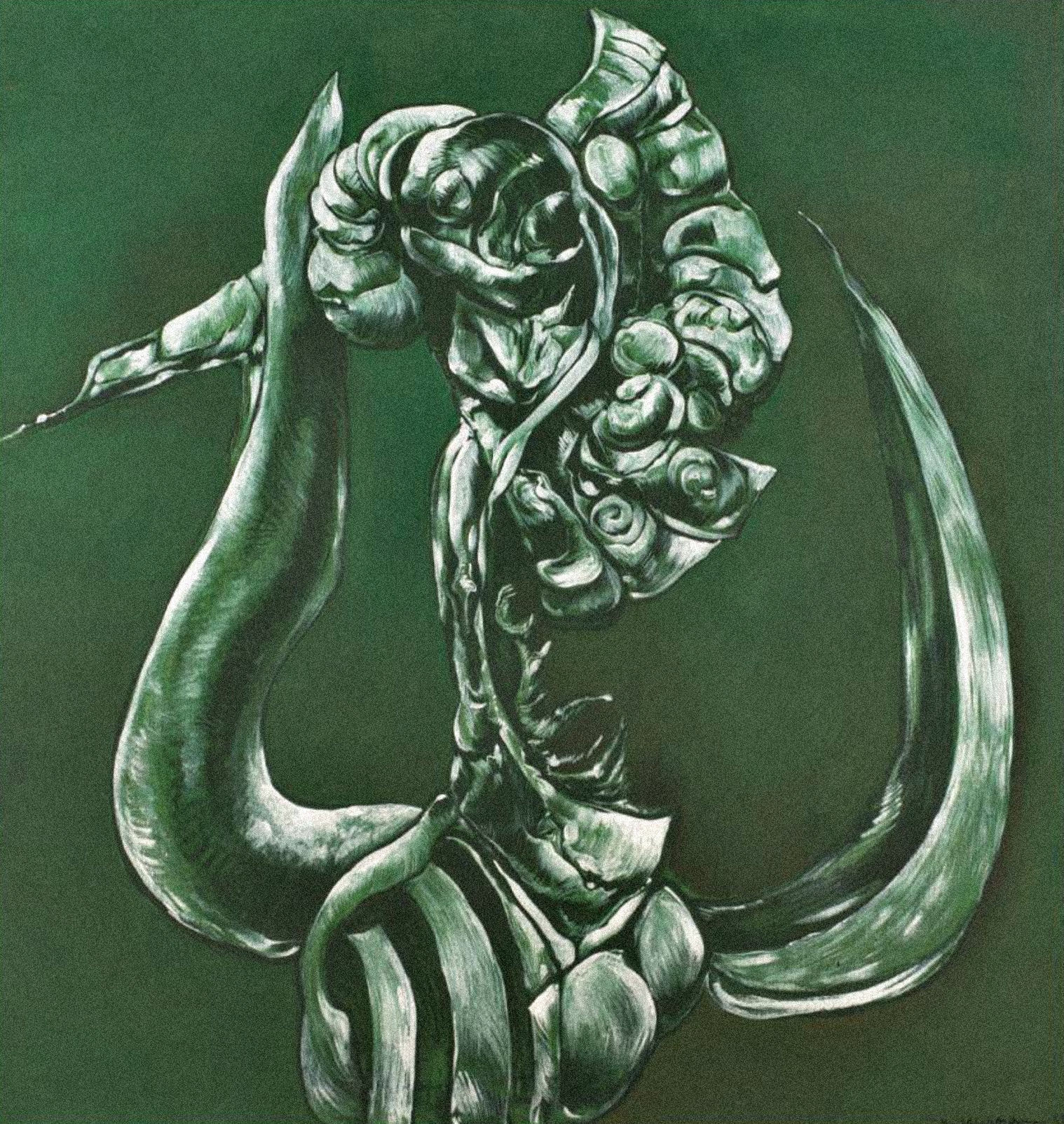


Kurt Seligmann was a Swiss-American Surrealist painter, engraver and occultist. He was known for his fantastic imagery of medieval troubadours and ghostly figures, breeze-born in gauzy forms and engaged in macabre rituals, inspired partially by the carnivals held annually in his native Basel and informed by his collection of books on magic and Gnosticism. His desire was to remain connected to the ancient traditions that were buried under the psychological and physical landscape of modern Europe, which formed a dialogue within his creative process that was as much about collective history as it was about personal mythology; summoning the elemental spirits of nature to portray them in their most abstract, primal and mineral bodies.
The esoteric sources of inspiration are inexhaustible to the imagination, for they exist within nature as archetypes, in things seen or witnessed, registered by the mind of the senses and arising from the vast storeroom of collective memory.
Seligmann’s shady spectres, wrapped in crystalline rainstorms; fallen angels draped in privately discovered vegetable worlds and sinews of nuanced daydreams, bound the animistic world through the movement of physical forms to constitute a world behind the real. The animistic world view, also contained within the work of other artists involved in the Surrealist exploration of psychoanalysis and later by influential writers such as Joseph Campbell in the 1950’s, would describe this phenomena as the Monomyth - a rhizomatic structure that unites all cultures within a single consciousness, who’s particular material expressions fluctuate with the ebbs and flows of time and space.
The esoteric sources of inspiration are inexhaustible to the imagination, for they exist within nature as archetypes, in things seen or witnessed, registered by the mind of the senses and arising from the vast storeroom of collective memory.
Seligmann’s shady spectres, wrapped in crystalline rainstorms; fallen angels draped in privately discovered vegetable worlds and sinews of nuanced daydreams, bound the animistic world through the movement of physical forms to constitute a world behind the real. The animistic world view, also contained within the work of other artists involved in the Surrealist exploration of psychoanalysis and later by influential writers such as Joseph Campbell in the 1950’s, would describe this phenomena as the Monomyth - a rhizomatic structure that unites all cultures within a single consciousness, who’s particular material expressions fluctuate with the ebbs and flows of time and space.

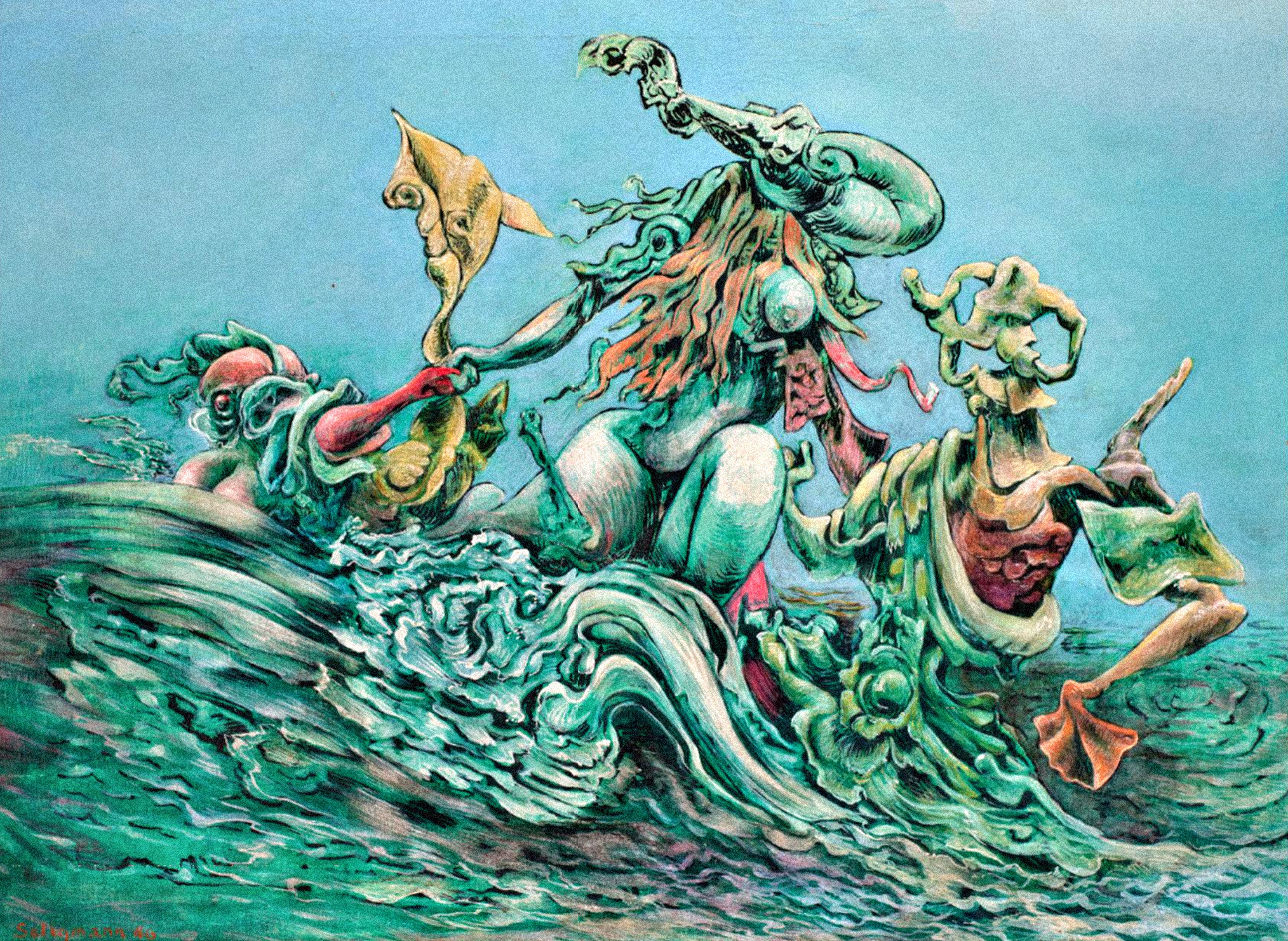
“Myth is the secret opening through which the inexhaustible energies of the cosmos pour into human manifestation.” - Joseph Campbell



Seligmann’s most noted collection of works on the subject of esotericism were contained in his 1948 book, ‘The Mirror of Magic’, which was to reveal magic as a central metaphor of existence.
“In this occult classic, Seligmann draws from his encyclopedic practitioner's knowledge and extensive antiquarian collection to offer a comprehensive, illustrated history of magic and the occult from Mesopotamia and ancient Egypt through the 18th century. He explores the gods and divinatory arts of the legendary Sumerians and the star-wise Babylonians, including the birth of astrology. He examines the afterlife beliefs of the ancient Egyptians and the dream interpretation practices and oracles of ancient Greece, including the mysteries of Eleusis and the magical philosophy of Plato, Socrates, and other Greeks. He uncovers the origins of Gnosticism and the suppression and banishment of magic by the post-pagan, Christian emperors of Rome. Seligmann reviews the principles of alchemy, sharing famous transmutations and allegorical illustrations of the alchemical process and explores the Hermetica and its remarkable adepts.“ - (Bookshop)
“In this occult classic, Seligmann draws from his encyclopedic practitioner's knowledge and extensive antiquarian collection to offer a comprehensive, illustrated history of magic and the occult from Mesopotamia and ancient Egypt through the 18th century. He explores the gods and divinatory arts of the legendary Sumerians and the star-wise Babylonians, including the birth of astrology. He examines the afterlife beliefs of the ancient Egyptians and the dream interpretation practices and oracles of ancient Greece, including the mysteries of Eleusis and the magical philosophy of Plato, Socrates, and other Greeks. He uncovers the origins of Gnosticism and the suppression and banishment of magic by the post-pagan, Christian emperors of Rome. Seligmann reviews the principles of alchemy, sharing famous transmutations and allegorical illustrations of the alchemical process and explores the Hermetica and its remarkable adepts.“ - (Bookshop)
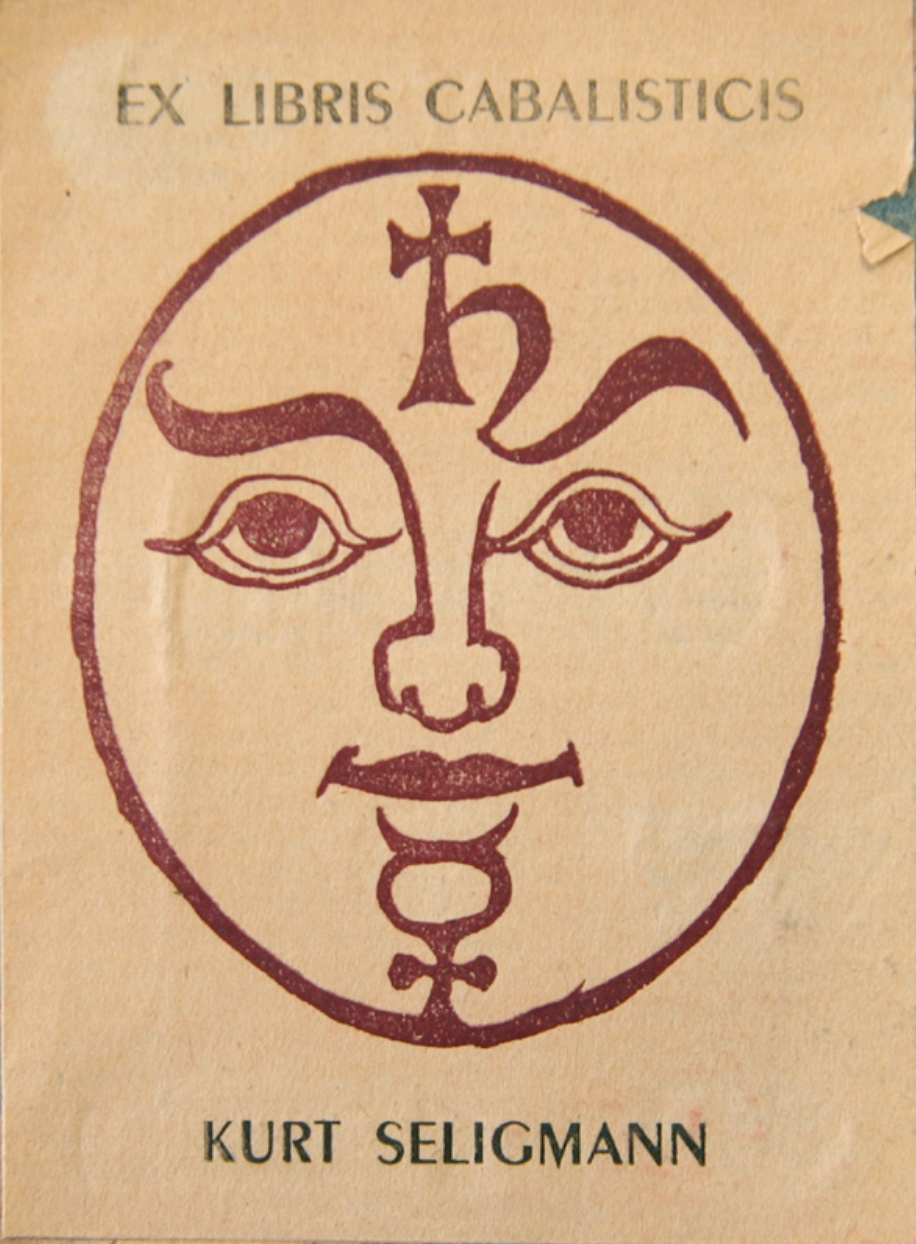
Of the ancient esoteric and animistic environments from out of which the rational mind of the monotheist separated himself from nature, where at once the artists’ role was to mythologise the world into translucent symbols in order not to obscure the light with which they sought to convey, Seligmann himself stated that, “This is the true reason why magic attracts me - the completeness of the magical world. For an artwork should as well be complete in itself. There should be a manifoldness of forms, a variety held together by a coordinating law similar to the magical world law spoken of in clear words by the Babylonians, the Egyptian magis and the Greek metaphysicians… the great philosophers have not been able to break through the magic circle… the great axiom of magic: all is all and all is one has haunted our civilised west and the near east for thousands of years.”
Seligmann goes onto describe in more detail his connection to magic through the artistic processes of creation by writing that the alchemical forces latent in the analogy of the artists’ labour are mainly psychic in nature, and in vain does the artist seek to master these forces, just as the medium experiences the trance, so too the artist becomes subjected to the forces at work within.
It is in this sense of correspondence that one must interpret the sign of the body as a series of interplays with a world soul - the very force that underlies the phenomena of physical space that arises through the substrate of time from an invisible realm.
Seligmann goes onto describe in more detail his connection to magic through the artistic processes of creation by writing that the alchemical forces latent in the analogy of the artists’ labour are mainly psychic in nature, and in vain does the artist seek to master these forces, just as the medium experiences the trance, so too the artist becomes subjected to the forces at work within.
It is in this sense of correspondence that one must interpret the sign of the body as a series of interplays with a world soul - the very force that underlies the phenomena of physical space that arises through the substrate of time from an invisible realm.

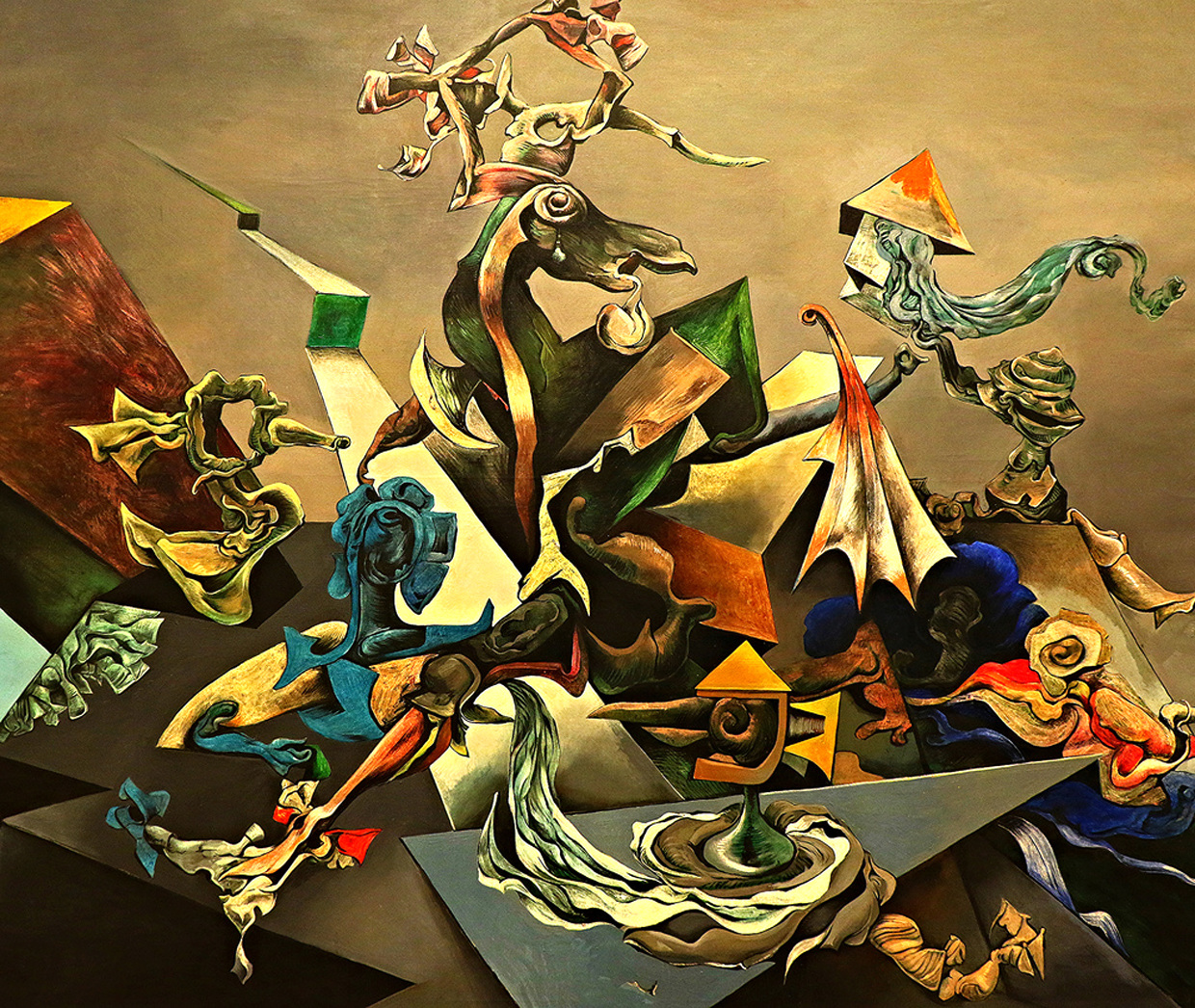



Further Reading ︎
'First Message from the Spirit World of the Object', Weinstein
'First Message from the Spirit World of the Object', digital book, issuu
Personal Myth with Stanley Krippner, Thinking Allowed
The Mirror of Magic, 50 WATTS, Books